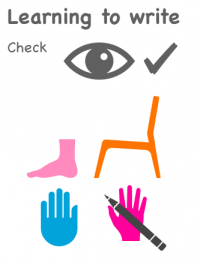Good Morning Boys and Girls,
Today I planned some Science experiments to do at home. Since we have been learning about water there is something that makes water super interesting and magical and that is how things look like when we look at them through water.
You are going to practice this experiments first and then you can set a magic show at home. You could easily be mistaken by a magician! At the end you can explain the Science behind.
These experiments are simple and most important fun!
Do you know what refraction of light means?
In simple words, everytime we look at things through water the light in it bends and in result we see a different image.
Like this one

Does the pencil or straw looks normal? Why? Discuss.
Experiments
Before and after you do your experiments there are a few questions you need to think first, such as:
Before: What do you think is going to happen?
-Why do you think that will happen?
After: What happened?
-Where you right or wrong?
-What do you think now?
1.Arrow and other objects Experiment

Materials
-Glass of water (not small so you can see better)
-Paper
-Marker
Steps
This experiment is very simple. First, draw an arrow near the top of the paper and one near the bottom, pointing the same direction. Second, put it behind the jar of water. Third, look right through the middle of the glass. What happens to the arrow? You can do the same with different objects from your home like: pencils, toys, other types of paper. What happens with all of them? Do you see them the same way as normal?

Science Behind
The light bends once when it traveled through the glass cup into the water, and then it bends again when it traveled out of the glass cup and into the air. As a result, the light paths cross and the image appears to be flipped horizontally (left/right).
Isn’t it great?
2. Zip Lock Bag Experiment

Materials:
-White paper
-Plasctic bag
-Marker
-Jar of water

Things change from the postition we look at them, so in this experiment you will look from above (looking at the surface) rather than in the middle of the glass. The video below will show you the steps and what happens. You can draw anything you want just make sure one drawing is white and the other has colour.
Steps
Video with steps
Science Behind
The same way the light bended -as we saw in the first experiment- will happen here. The difference is that we are looking from a different postition/angle, that makes the light to bend completely so it doesn’t get to our eyes. The part that we can see it is because it has not bended completely.
Isn’t is great?
Here is how it worked for me
My Sway
Comment on what you did, what happened, how you felt and of course if you had fun. Can you do some magic at home now?
Ms. Maturana














